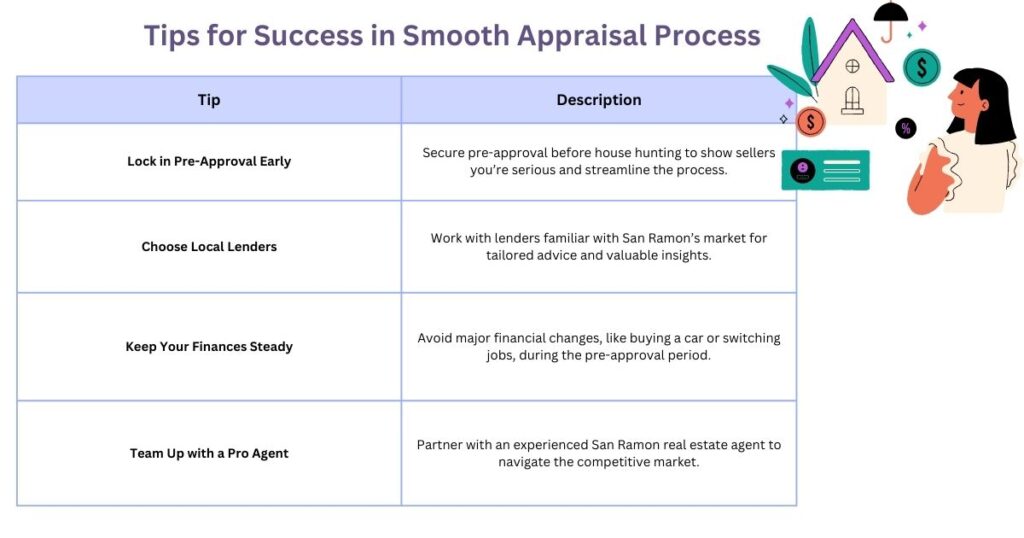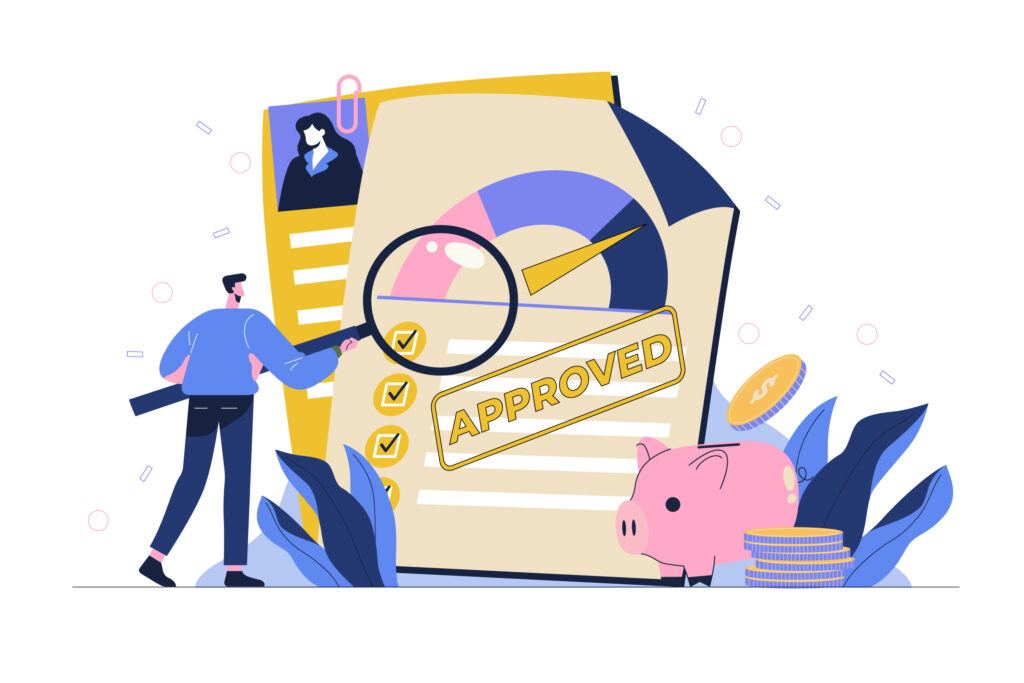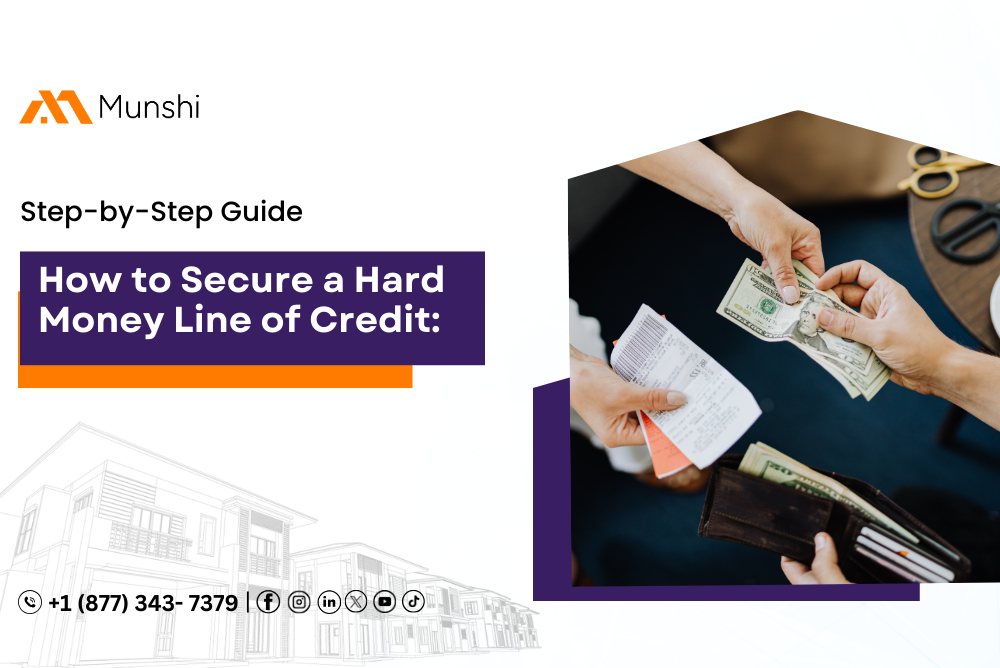Table of Contents
ToggleIntroduction
Navigating San Ramon’s highly competitive and thriving market can feel intimidating. It is a haven for homebuyers searching for safe neighborhoods, excellent schools, and a vibrant community in California’s East Bay.
However, securing a lucrative deal in a market like San Ramon is difficult. A well-informed investor knows the difference between pre-approval and pre-qualification and how pivotal these two aspects play in finalizing any real estate deal.
In this blog, we will dive deeper into the major differences between pre-approval and pre-qualification and how you can navigate this fast-paced market with calm and confidence.
Pre-Approval or Pre-Qualification: What’s the Big Difference?
- Pre-qualification is an informal process of gathering unverified information about interested borrowers. It is a casual communication between the lender and borrowers that provides an idea of your basic financial information and a rough estimation of your borrowing capacity.
- Pre-approval is the ‘real deal’. It is a formal process that involves detailed verification of the buyers’ financial portfolio and is a reflection of how serious and engaged you are in the real estate offer.
- Let’s discuss approvals and these differences in a much more detailed manner through the table given below:
Feature | Pre-Qualification | Pre-Approval |
Process | Informal, based on self-reported data | Formal, requires financial verification |
Credit Check | Not required | Required |
Accuracy | Rough estimate | Precise loan amount |
Seller Confidence | Low | High |
Time to Complete | Quick (hours to a day) | Takes longer (days to weeks) |
Understanding the Pre-Qualification Process
Initial Contact with Lenders
- The first step in your home-buying journey is to reach out to potential lenders and communicate your goals and needs about the type of property you desire to purchase, especially your budget.
- Considering multiple lenders improves your chances of securing a great deal with better preliminary terms and establishing a steady relationship with the lenders.
Gathering your Financial Details
- After finalizing the lender that you wish to engage with, the next step is to disclose your basic financial information, which includes your credit score, assets, income, and debts.
- This step is pivotal for lenders to provide a general understanding of your financial health and borrowing capacity.
Lender’s Estimate: What Can You Borrow?
- After evaluating your financial portfolio, the lenders provide you with a ‘ballpark figure’ which is an estimate of the loan amount that you might qualify for.
- This also provides insight into your monthly mortgage payments. However, these figures are not final or reflect any commitment. They might fluctuate during the pre-approval or underwriting process.
- This estimation helps borrowers explore the market for other better deals that truly align with their financial goals and overall budgeting.
Pre-Qualification: What’s Great and What’s Not
Pre-qualification is your first step in your dream home journey, and like any process, it has its advantages and disadvantages. Let us have a quick comparison between the two:
Pros | Cons |
Quick and Easy: No documentation is needed; it is often completed in minutes. | Non-bindinand’s just an estimate, not a guarantee. |
No Credit Check: This does not impact your credit score. | Limited Accuracy: The estimate is based on unverified information. |
Free of Charge: Most lenders offer pre-qualification at no cost. | Less Competitive: Doesn’t carry as much weight with sellers. |
Helps You Set a Budget: Gives a rough idea of what you might be able to borrow. | Not a Serious Commitment: Sellers may see it as less reliable. |
Your Pre-Approval Game Plan: Simple and Straightforward
Let’s take a closer look at the pre-approval process, which includes everything from completing your mortgage application to going through the underwriting procedure and how it affects your loan eligibility.
Filling Out Your Mortgage Application
- The foremost step in starting your pre-approval journey is completing your mortgage application. This requires interested borrowers to provide their financial details extensively.
- This disclosure serves as a foundation for lenders to analyze whether you are eligible for a loan or not.
- Accurate and crisp communication of your financial status makes the entire process a whole lot smoother and easier.
Furnishing Requested Documentation
- After completing your mortgage application, the next step is to furnish the required documentation demanded by lenders for your income verification.
- This includes tax returns, proof of income, assets, and liabilities on the basis of which lenders assess your ability to repay the loan and how much they are in favor of lending you.
Evaluating Creditworthiness
- One of the pivotal steps of the pre-approval process is checking your financial history. The lenders assess your creditworthiness by generating a credit report from any major credit bureau to check for any past mishaps or bankruptcies.
- Having a superior credit score not only enhances your credit portfolio but also reduces your loan interest rates.
Underwriting
- This step involves a thorough review of your mortgage application and submitted documents.
- If the underwriter is unsure about anything, you will be asked to furnish any additional documents for further clarification.
- Underwriting is crucial for lenders as it decides the fate of your loan application, whether to approve or reject it.
Securing your Pre-Approval Letter
- After successfully clearing the underwriting process, you will receive a pre-approval letter of loan acceptance from the lenders
- This letter gives a clear understanding of your loan amount, interest rates, and other terms and conditions.
- This letter is also a strong indication to the sellers that you are a sound and capable buyer with great financial health and also gives you a competitive advantage in a fast-paced market like San Ramon.
The Highs and Lows of Getting Pre-Approved
While pre-approval sets the tone for your credibility and boosts your appeal in the eyes of sellers, it comes with its challenges too. Let us break down these pros and cons :
Pros | Cons |
Gives clear borrowing power | Requires detailed financial documentation |
Strengthens offers in competitive markets | Doesn’t guarantee final loan approval |
Speeds up the buying process | May take time to complete |
Can lock in interest rates early | Rate locks may expire before the purchase |
Usually free or low-cost | Some lenders may charge fees |


Pre-approval vs. Pre-Qualification in Action
Let us simplify and create a clear comparison between pre-approval and pre-qualification with a real-life scenario:
|
Buyer |
Alex |
Jordan |
|
Letter Type |
Pre-Qualification |
Pre-Approval |
|
Financial Verification |
Basic evaluation, no detailed checks |
Thorough financial review and verification |
|
Credibility |
Moderate, less assurance for the seller |
High, demonstrating strong financial backing |
|
Offer Price |
Similar to Jordan |
Similar to Alex |
|
Seller’s Choice |
Not chosen due to weaker financial assurance |
Chosen for stronger financial credibility |
|
Key Lesson |
Pre-qualification lacks the depth needed in competitive markets. |
Pre-approval provides a significant edge in negotiations. |
Conclusion
Securing a lucrative and attractive deal in a highly competitive market like San Ramon is no cakewalk. Recognizing the difference between pre-approval and pre-qualification is essential as well as crucial to having a smooth and successful home-buying journey. While pre-qualification can be a starting point, pre-approval serves as a confident transition, a deciding factor in acquiring the home of your dreams.
We at Munshi Capital understand the need to have appropriate knowledge and expertise to navigate the fast-paced nature of the real estate market and its complexities while simultaneously providing you with the confidence to make informed and prompt decisions that truly align with your financial goals.
Frequently Asked Questions
- What is the duration of a pre-approval in San Ramon?
Pre-approval usually has a legal time duration of 60 to 90 days. However, after the time expiration, the borrowers have to start the process afresh to reflect any other financial adjustments that may have occurred.
- Does pre-approval impact my credit score in any way?
Yes, it might result in a negligible decline in your credit score as it involves credit checking through a credit report from any major credit bureaus.
-
Is the pre-qualification estimate accurate?
Pre-qualification is as accurate as the information that is furnished by the interested borrowers.
Read More: First-Time Home Buyer Qualifications | Munshi Capital





